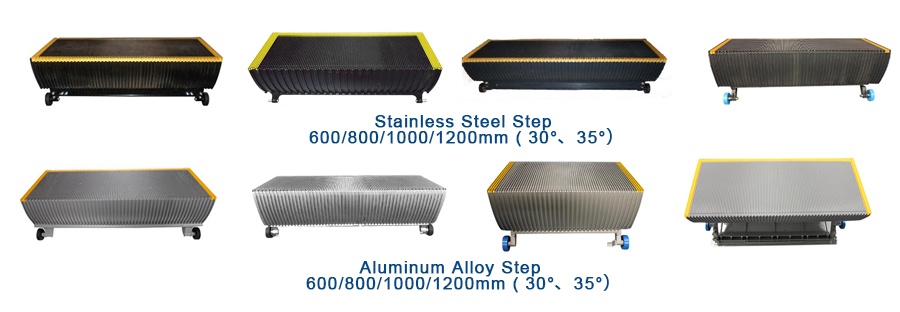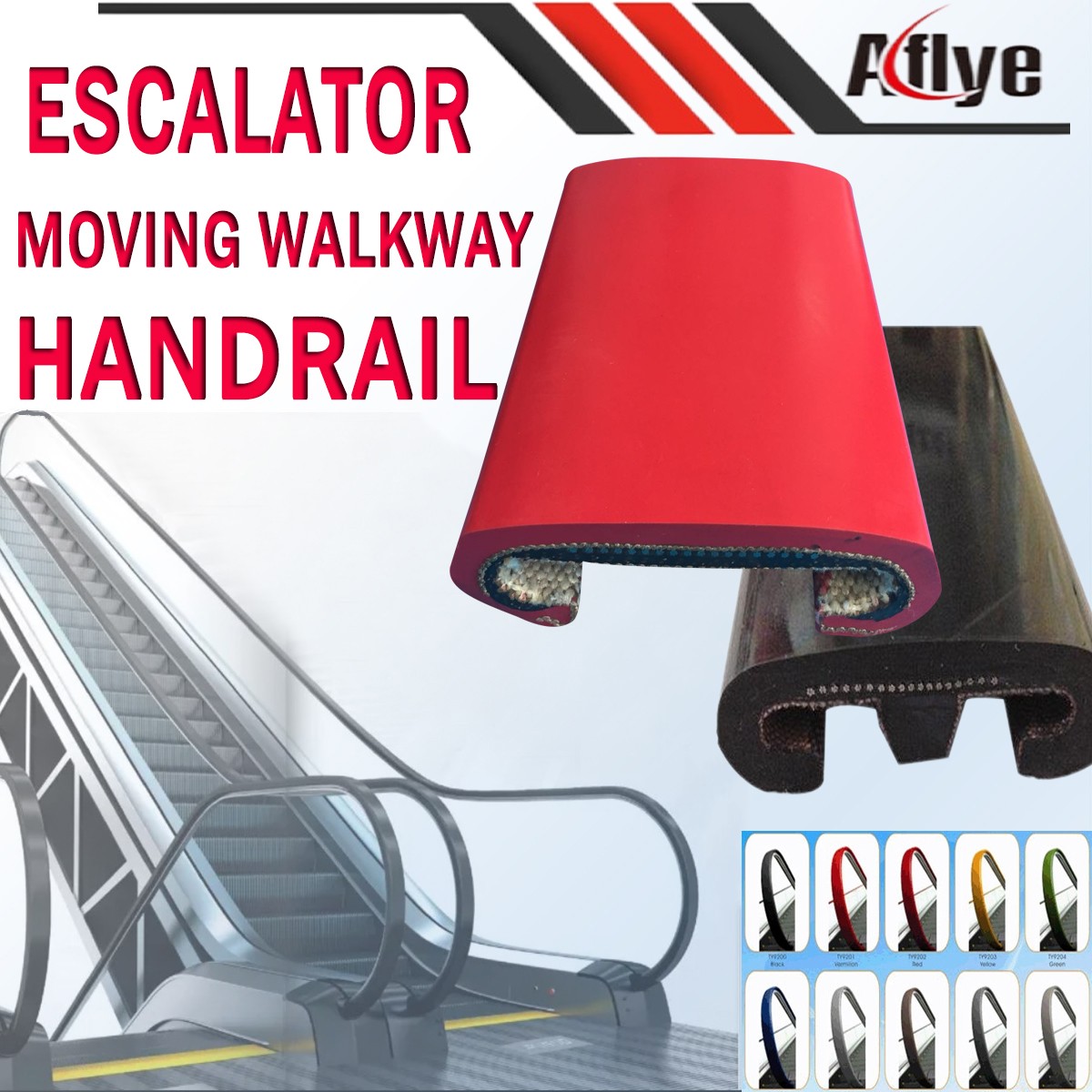How many parts are in the escalator?
The main components of an escalator parts include the following key systems:
Escalator Steps: The steps provide a surface for passengers to stand on. They are typically made of metal and are attached to the step chain.

Step Chain: The step chain drives the movement of the steps in a continuous loop and is the core transmission component of the escalator.

Drive Unit:
1.Motor: Provides the necessary power to operate the escalator.
2.Reducer: Reduces the motor speed and increases torque.
3.Drive Chain: Transfers the motor’s power to the step chain.
Guiding System:
1.Guide Rails: Restrict the lateral and longitudinal movement of the step chain.
2.Guide Wheels: Roll along the guide rails to keep the step chain in the correct position.
Escalator Handrail:

1.Handrail Drive: Ensures the handrail moves in sync with the steps.
2.Handrail Guide Rails: Maintain the handrail’s correct position and shape.
3.Tensioning Device: Maintains the appropriate tension for both the step chain and the handrail.
Support Structure:
1.Frame: Provides structural support for the entire escalator.
2.Staircase: Acts as the passage for passengers to go up and down.
Control System:
1.Control Panel: Contains the electronic and electrical components that control the escalator’s operation.
2.Switches and Sensors: Used to start, stop, and monitor the escalator’s operational status.
Safety Devices:
1.Emergency Stop Button: Stops the escalator in case of an emergency.
2.Step Sensor: Detects missing or damaged steps.
3.Handrail Speed Monitor: Ensures the handrail speed matches the step speed.
4.Overload Protection: Prevents damage due to overloading.
5.Safety Brushes: Prevents passengers’ clothing or items from getting caught in the edges.
Upper and Lower Landing Equipment:
1.Entrance and Exit Plates: Help passengers get on and off the escalator smoothly.
2.Plate Drive Mechanism: Synchronizes the plate movement with the steps.
These components work together to ensure the escalator operates safely and efficiently.

